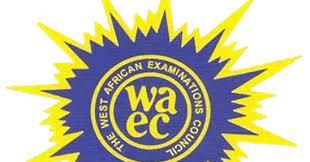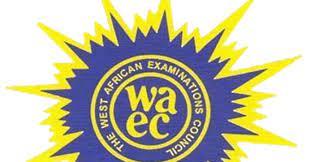
WAEC Syllabus for Book Keeping. WAEC Syllabus for Book Keeping is available for all candidates who want to participate in the examination. The West African examination council (WAEC) has officially introduced a syllabus that will guide all the WAEC candidates who wish to write the WAEC examination this year. For a very successful WAEC Book Keeping examination for this year, you need to check out the available areas of concentration. It has been divided into sections with chapters, followed by the topics to be covered in preparation for the exams. In the WAEC Syllabus for Book Keeping, you will also see the format of how the WAEC Book Keeping questions will be presented. Jamb form
There are 2 sections to answer questions from. Paper 1 contains multiple-choice (Objective) questions while Paper 2 is practical questions.

This WAEC syllabus is for both the O'level WAEC and General Certificate Examination (GCE) candidates. Final year students in the senior secondary school level and external candidates are eligible to make use of this syllabus and prepare ahead of the examination. Waec Result
See the full detailed information concerning the WAEC Book Keeping Syllabus below.
The Book Keeping syllabus is designed to assess the candidates' basic knowledge of business activities and understanding of financial systems for the purpose of establishing a business and laying a good foundation for further studies.
The aim of this paper is to test candidates':
- knowledge of basic skills required to start a business;
(ii) ability to appreciate the rules and functions of book keeping;
(iii) ability to apply the basic knowledge and sk i lls in Book Keeping to modern business activities.
There will be two papers, Papers 1 and 2, both of which will be a composite paper to be taken at one sitting.
PAPER 1: Will consist of forty multiple-choice questions all of which must be answered in 50 minutes for 40 marks.
PAPER 2: Will consist of two sections, Sections A and B as follows:
Section A: Will cover Theory of Book-Keeping and contain four questions. Candidates will be required to answer two for 20 marks.
Section B: Will cover Practice of Book-Keeping and contain five questions. Candidates will be required to answer three for 60 marks. The paper will last 2 hours. Npower Recruitment
1
Introduction to
Book Keeping
1.1 Meaning of Book Keeping
- definition, history, nature, importance and functions of Book Keeping;
- career opportunities and beneficiaries of bookkeeping;
- qualities and values of book keepers.
1.2 Assets and Liabilities:
- definition, differences, classification and examples of Assets and Liabilities.
1.3 Business Transactions:
- meaning and types of business transactions;
- parties involved in business transactions.
1.4 Classification of Accounts:
- personal accounts (debtors and creditors);
- Impersonal accounts (real and nominal).
1.5 Source Documents:
- definition, identification, types and uses of source documents.
4
Ledger and Principles of Double Entry
4.1 Ledger:
- definition, classification, format, uses and preparation of ledgers.
4.2 Principles of Double Entry:
- meaning, history, rules and making double entries.
5.
Cash Book
5.1 Meaning, purpose, description, differences and preparation of:
- single column;
- double column;
- three column;
- petty cash book.
6.
Bank Reconciliation Statement
- meaning and purpose
- terminologies and banking documents
- causes of differences between cash book and bank statement balance
7.
Trial Balance and Errors
- meaning and functions of trial balance;
- rules and preparation of trial balance;
- meaning, types, classification of errors;
- correction of errors and preparation of Suspense Account.
8.
Financial Statements of Sole Proprietorship
8.1 Trading Account:
- definition, purpose, format and preparation of simple Trading Account;
- methods of valuing stock (FIFO and LIFO).
8.2 Profit and Loss Account:
- definition, purpose, format and preparation of Profit and Loss Account;
8.3 Balance Sheet:
- meaning, content, format and preparation of a simple balance sheet.
9.
Adjustments to Financial Statements
9.1 Adjustment for prepayments, accruals, depreciation, bad and doubtful debts;
9.2 Meaning and methods of depreciation (straight line and reducing balance).
13.
Manufacturing Accounts
- meaning, purpose and terminologies;
- preparation of Manufacturing, Trading, Profit and Loss Accounts.
14.
Partnership Accounts
- meaning and terms:
- partnership deed, drawings, interest on capital, interest on drawings;
- preparation of Capital and Current Accounts, Profit and Loss and Appropriation Account and Balance Sheet;
- admission of new partners and Goodwill Account.
15.
Joint Venture Accounts
- meaning and purpose;
- differences between joint venture and partnership.
16.
Departmental and Branch Accounts
- importance and differences;
- preparation of Departmental and simple Branch Accounts.
17.
Introduction to Company Accounts
- formation and terminologies;
- preparation of simple financial statements.
18.
Interpretation of Accounts
- Purpose and computation of ratios:
- net profit margin;
- stock turnover; Dollar to Naira Rate
- quick ratio;
- acid test ratio;
- gross profit margin;
- return on capital employed.
22
Contract Accounts
- mean ing, purpose and terminologies;
- preparation of Contract Accounts. Jamb Result
NOTE: Emphasis should be on application SUGGESTED READING LIST- Business Accounting Vol.1 and 2 F. Wood
- Book-keeping and Accounts (ELBS) Spicer & Peggler
- Introduction to Accounting for Business Studies F.P. Langley
- Accounting I ad II Jennings
- Essential Financial Accounting for Senior Secondary School
O.A Longe and R.A. Kezeem
